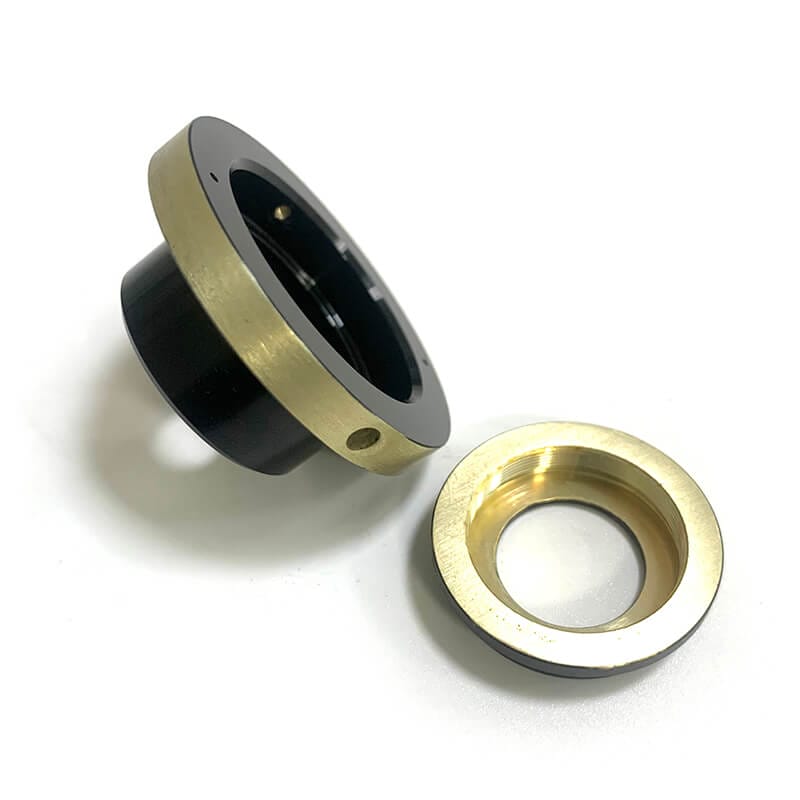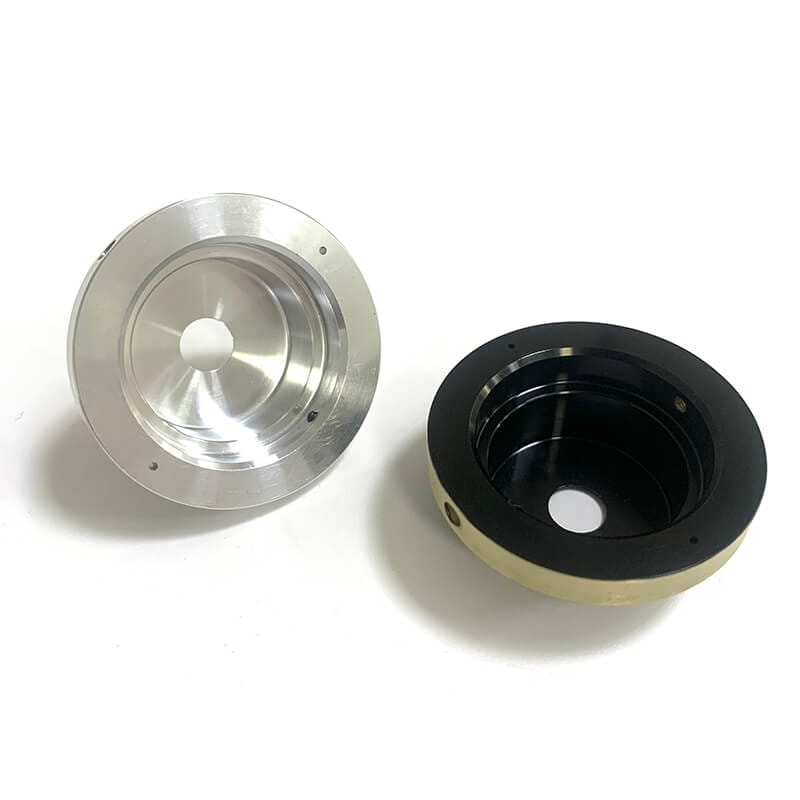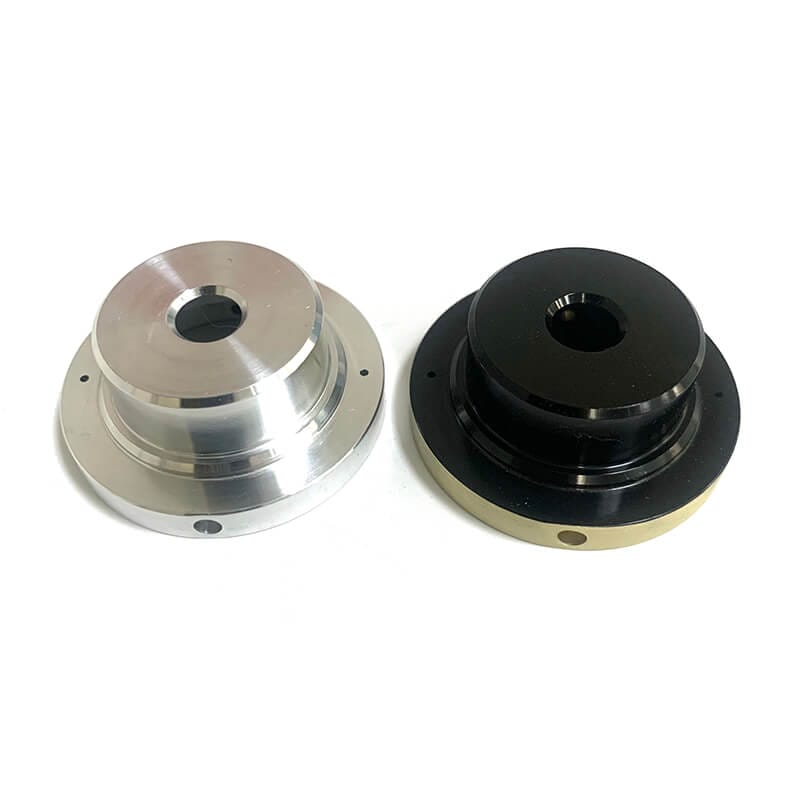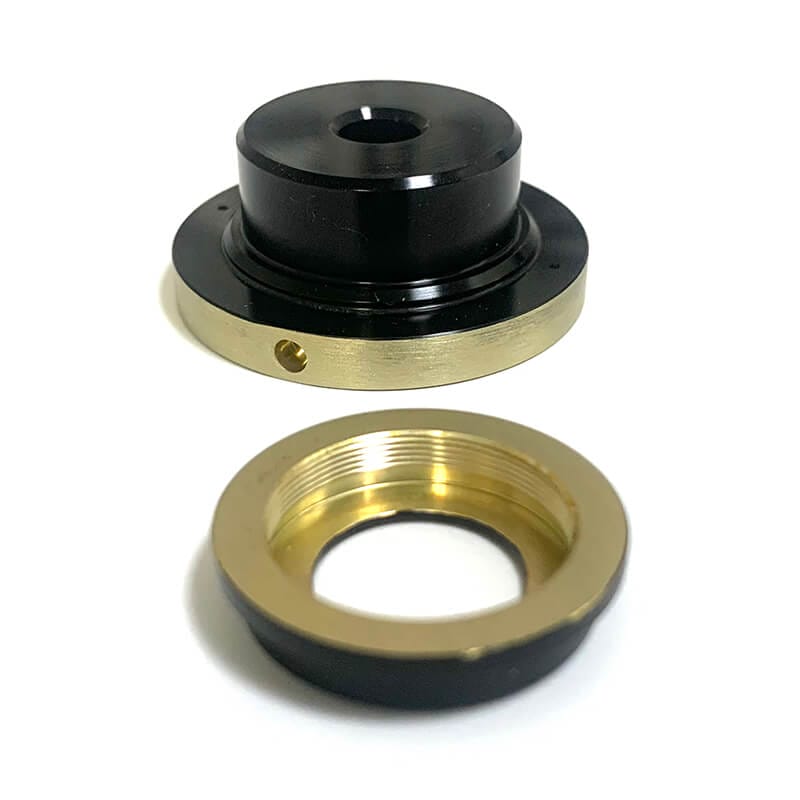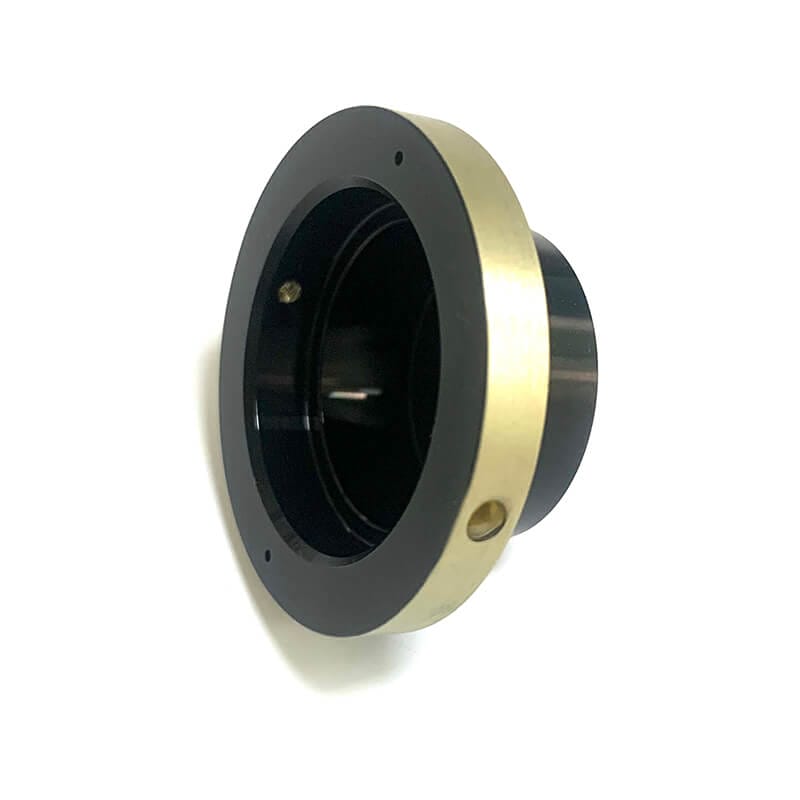Description
Features of chemical conductive oxidation
- The oxidation coating is colorless and transparent, with a thickness of 0.3 – 0.5μm and featuring good electrical conductivity, and is mainly used for distorted electric parts made of aluminum.
- The oxidation coating is about 0.5μm thick, has no color to rainbow color and dark brown, and has good corrosion resistance and a few holes. It is applicable to large parts or assembly parts that are not suitable for anodizing.
- The oxidation coating is of golden and rainbow colors, with good corrosion resistance and is suitable for local oxidation of aluminum alloy welding parts.
- The oxidation coating is of the rainbow color and thin, with better electrical conductivity than formula No.2, and suitable for the parts with requirements of a certain electrical conductivity.
- After chemical conductive oxidation is performed the coating treatment is required for padding. The formula of the after-treatment is 30-50g/LK2Cr2O7 (or Na2Cr2O7) (level CP) at 90-95℃ for 5-10min. It is often used for the base layer of the paint spraying process or the electrophoretic paint process.
- Reducing only the content of NaF can turn the coating appearance from a rainbow color to a golden color. Increasing the content of NaF and reducing the content of potassium ferricyanide can lead to a shorter oxidation time and an earthy yellow for the coating appearance instead of the rainbow color.
Differences between anodizing and conductive anodizing
- Anodizing is an electrochemical process that is performed with high-voltage electricity, while conductive anodizing (also called chemical anodizing) is a pure chemical reaction that requires only soaking in a liquid solution without electricity.
- Anodizing takes a long time, usually dozens of minutes, while conductive anodizing needs only dozens of seconds.
- The coating produced by anodizing is several to dozens of micrometers thick, hard and wear-resistant, while the coating produced by conductive anodizing is only 0.01-0.15 micrometers thick, with poor abrasion resistance. The latter also has the advantages of electrical conductivity and atmosphere corrosion resistance.
- The oxidation coating is actually not conductive. It has electrical conductivity only because it is too thin.
Theory of Anodizing
The so-called aluminum anodizing is a process of electrolytic oxidation in which an oxidation coating is produced on the surface of aluminum or its alloy.
This oxidation coating features protection, decoration and other functions. From the perspective of this definition, aluminum anodizing includes only the process of producing the anodizing coating.
Take a metal part or an alloy part as the anode, and use the method of electrolysis to form a thin oxide coating on its surface.
The metal oxide coating changes surface status and properties, such as surface coloring, improved corrosion resistance, improved abrasion resistance and hardness, and metal surface protection.
Take aluminum anodizing as an example. Aluminum or its alloy is put into a corresponding electrolyte (such as sulfuric acid, chromic acid, and oxalic acid) as the anode, and electrolysis occurs when certain conditions and external current is applied.
The aluminum or its alloy oxides and form a thin aluminum oxide coating on its surface, with a thickness of 5-30 micrometers or even 25-150 micrometers for a hard anodizing coating. After anodizing, the aluminum or its alloy has improved hardness and abrasion resistance up to 250-500 kg/mm2, with good heat resistance.
The hard anodizing coating has a melting point of up to 2,320K, good insulativity, a breakdown voltage of up to 2,000V, and improved corrosion resistance of thousands of hours in ω=0.03NaCl salt fog.
With a large amount of micropores that can adsorb various lubricants, the anodizing coating is suitable for engine cylinders and other wear-proof parts. The adsorption capacity of the coating’s micropores makes all kinds of beautiful gorgeous coloring possible.
Anodizing can be conducted for nonferrous metals and other alloys (such as aluminum, magnesium and their alloys). This method is widely applicable to mechanical parts, airplane and automobile parts, precision instruments and radio components, daily necessities and building decorations.
Normally, aluminum or its alloy is taken as the anode and a lead plate is taken as the cathode. They are both put into an aqueous solution that contains sulfuric acid, chromic acid, or oxalic acid for electrolysis so that an oxidation coating is formed on the surfaces of both the aluminum and the lead plate. Sulfuric acid is used the most widely among these acids.
The surface treatment for lathe machine parts is not a difficult thing for a turned parts manufacturer with mature technologies but is a test for this turned parts manufacturer as to its detail control capabilities.
If more surface treatments are performed for a lathe machine part, this lathe machine part will present relatively more functions.
 Call Us Today! (+86) 188-2253-7569
Call Us Today! (+86) 188-2253-7569